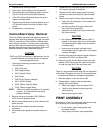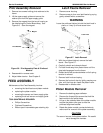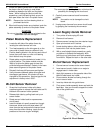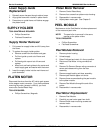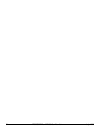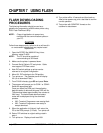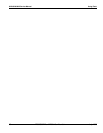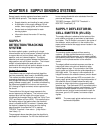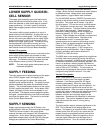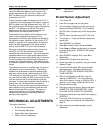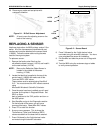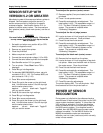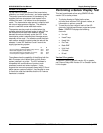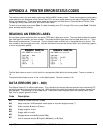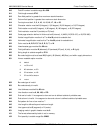
July 1998 TC9830SM Rev. B 7/98 Confidential 37
CHAPTER 8 SUPPLY SENSING SYSTEMS
Several supply sensing systems have been used for
the 9800 series printers. This chapter contains:
• Supply detection and tracking for each printer.
• A description of the supply deflector, Bi-cell
emitter, lower supply guide, and Bi-cell sensor.
• Sensor tests and adjustments for each
sensing system.
• Information about the version 5.2 sensing
system.
SUPPLY
DETECTION/TRACKING
SYSTEM
An electro-optical system, consisting of a single
infrared emitter and a bi-cell sensor, allows the printer
to support die-cut, butt-cut (black mark only), with
aperture, and non-indexed supplies. The supply
detection and tracking system detects the document
edge position and out-of-stock condition. The infrared
emitter is located above the web path and is
positioned to allow the bi-cell sensor detector to serve
as a receiver for recognizing die-cut supplies.
Version 5.2 or greater:
The software uses an adaptive threshold algorithm
that has successfully been used in the M9446 printer.
This method provides the benefit of accurately
processing apertures, die cut gaps, and black marks
even though the electronic signal response may vary
greatly between supply types. It consists of measuring
the difference between the minimum and maximum
A/D (Analog to Digital converter) values captured from
the sensor.
The amplitude of this signal range represents the
sensor response to the feature. The minimum value
captured plus half the height of the signal range
constitutes the threshold level for both the Top of Form
(TOF) and Bottom of Form (BOF). This means that on
the leading edge of the feature when the threshold
value is crossed the BOF is marked. Likewise when
the feature is departing the sensor and the trailing
edge threshold is crossed the TOF is marked.
TOF/BOF Threshold = Low value + ((High Value -
Low Value) / 2)
The paragraph above describes how the algorithm is
developed on one feature. For V5.2 the threshold will
be an average threshold value calculated from the
previous two features.
TOF/BOF Average = (BOF/TOF Threshold1 +
BOF/TOF Threshold2) / 2
SUPPLY DEFLECTOR/BI-
CELL EMITTER (IR LED)
The supply deflector is attached to the bottom of the
print module and pivots up and down to load labels
and ribbon. The IR Emitter is mounted in the center of
the deflector, which positions it in the middle of the
paper path and above the supply sensor located in the
supply guide.
Version 5.2 or greater:
The sensing system consists of three sensing
systems: an edge justified transmissive sensor, a
center justified reflective sensor, and a center justified
transmissive sensor which contains an LED positioned
directly over the phototransistor of the reflective
sensor.
The edge justified transmissive sensor provides an
index signal when using die cut labels and edge
justified aperture tags. It is mounted on the inside
supply guide and moves with the guide depending on
the supply width. This sensor is connected with an
integral harness to the reflective sensor junction board.
The center justified overhead LED is mounted in the
upper supply guide (flapper) and the phototransistor of
the reflective sensor (located below the web) and
provides an index signal when using center justified
aperture tags. The overheard LED is connected with a
harness to the reflective sensor junction board. A wire
harness connected between the main PCB and the
reflective sensor junction board provides the path for
the power, ground, LED power, and sensor output
signals.
NOTE: The new supply guide mechanisms are not
backward compatible.



